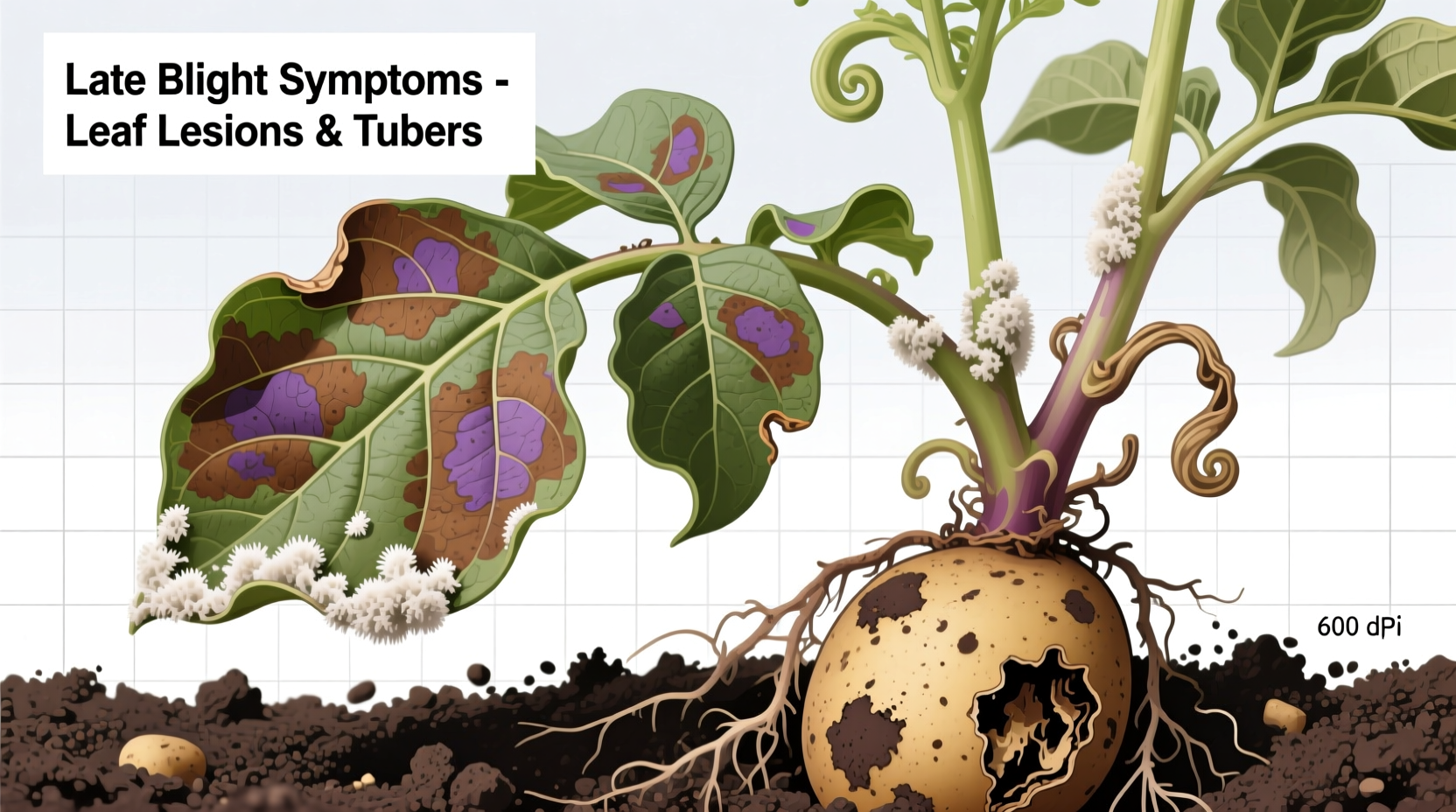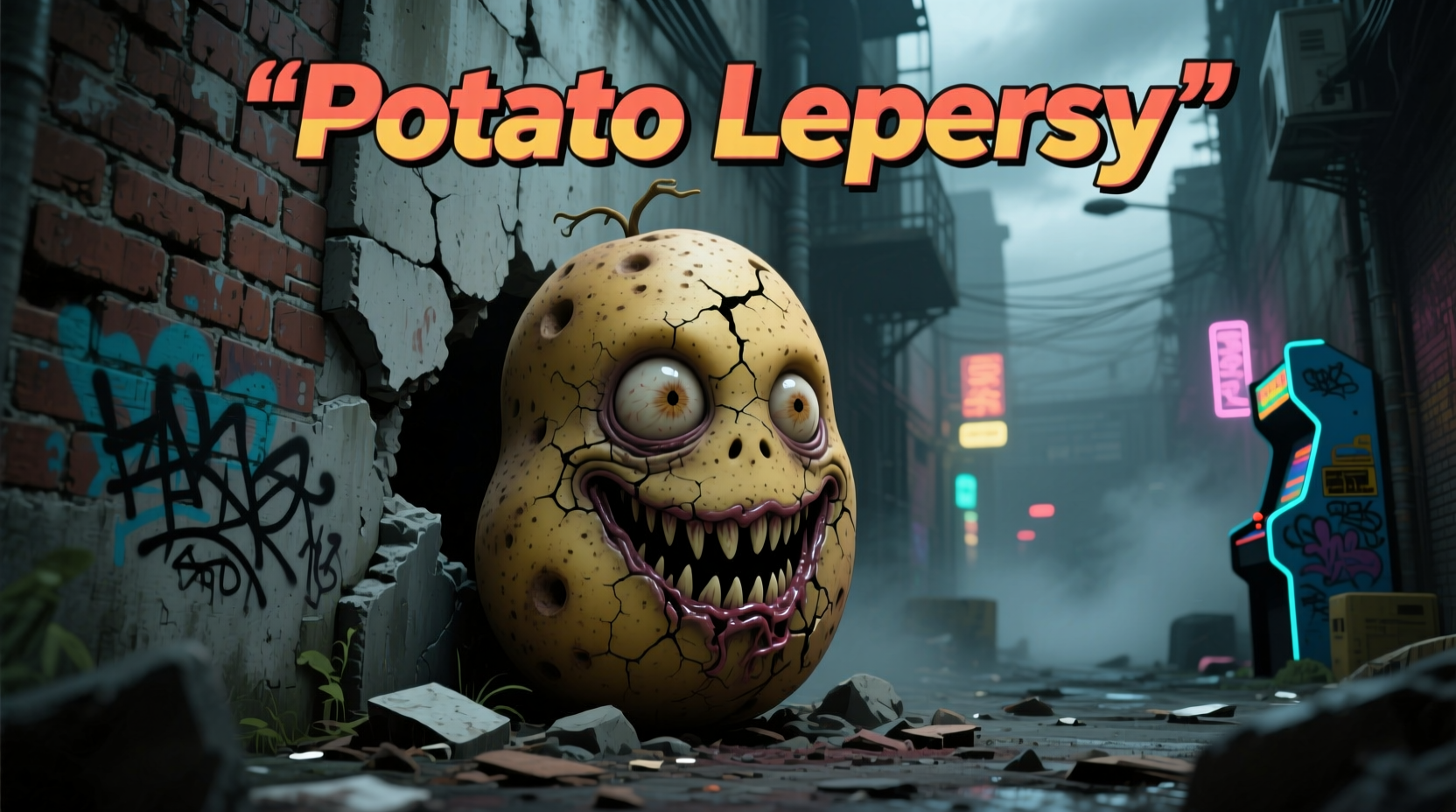Many gardeners and farmers search for information about "potato lepersy" only to discover this isn't a scientifically valid term. This confusion typically stems from mishearing or misspelling actual potato disease names. Let's clarify what's really happening in your potato patch and how to properly identify and address genuine potato health issues.
Understanding the Misconception: Why "Potato Leprosy" Doesn't Exist
The confusion between "leprosy" and potato diseases likely originates from phonetic similarities to terms like "blight" or "lesions." Leprosy (Hansen's disease) is caused by Mycobacterium leprae and Mycobacterium lepromatosis - bacteria that exclusively infect humans and certain armadillos. Plants have completely different biological systems that cannot host human pathogens.
When examining potato problems, you're actually dealing with one of several well-documented plant diseases. The most commonly mistaken for "potato leprosy" include:
| Actual Disease | Confusion Source | Scientific Name | Host Specificity |
|---|---|---|---|
| Late Blight | "Blight" misheard as "leprosy" | Phytophthora infestans | Potatoes, tomatoes |
| Common Scab | Lesion appearance | Streptomyces scabies | Root vegetables |
| Blackleg | Stem discoloration | Pectobacterium spp. | Potatoes |
| Verticillium Wilt | Foliar symptoms | Verticillium dahliae | Multiple crops |
Identifying Real Potato Diseases: What You're Actually Seeing
When potato plants show symptoms that might be mistaken for "leprosy," you're typically observing one of these scientifically documented conditions:
Late Blight: The Historical Potato Destroyer
Late blight caused the Irish Potato Famine and remains agriculture's most notorious potato disease. According to the USDA Agricultural Research Service, this oomycete pathogen can destroy an entire field within days under favorable conditions.
Symptoms include:
- Water-soaked lesions on leaves that rapidly turn brown
- White fungal growth on undersides of leaves in humid conditions
- Dark, firm rot on tubers with a reddish-brown margin
- Entire plants collapsing during wet weather

Common Scab: The Surface Problem
Common scab creates corky, raised lesions that resemble skin conditions, possibly contributing to the "leprosy" misconception. Research from Cornell University's College of Agriculture and Life Sciences shows this bacterial disease affects approximately 30% of commercial potato crops in North America annually.
Key identification features:
- Raised, corky lesions on tuber surface
- Lesions may be circular or irregular
- Doesn't penetrate deeply into tuber flesh
- Worse in alkaline, dry soils
Prevention and Management Strategies for Potato Growers
Effective disease management requires accurate identification followed by appropriate interventions. The International Potato Center recommends these evidence-based approaches:
Cultural Controls That Actually Work
- Rotation: Implement 3-4 year crop rotation with non-host plants like grains or legumes
- Irrigation management: Avoid overhead watering to reduce leaf wetness duration
- Soil pH adjustment: Maintain soil pH below 5.2 to suppress common scab development
- Resistant varieties: Choose cultivars like 'Russet Burbank' (moderate late blight resistance) or 'Atlantic' (scab resistance)
When Chemical Intervention Becomes Necessary
According to the University of Minnesota Extension, fungicides should be used as part of an integrated approach rather than standalone solutions:
- Late blight: Apply protectant fungicides like chlorothalonil before disease onset
- Scab management: Consider soil-applied thiabendazole for high-value crops
- Always follow label instructions and resistance management guidelines
- Never apply chemicals as a substitute for proper cultural practices
When to Consult Agricultural Professionals
Accurate diagnosis is critical before implementing control measures. The USDA Agricultural Research Service reports that misdiagnosis leads to ineffective treatments in approximately 40% of home garden cases. Seek professional help when:
- You observe symptoms across multiple plant families
- Disease spreads rapidly despite control attempts
- You're considering chemical interventions
- Symptoms appear unusual or don't match common disease descriptions
Local cooperative extension services provide free or low-cost diagnostic services using laboratory analysis to confirm pathogens. This evidence-based approach prevents wasted effort on incorrect treatments.
Preserving Potato Health: Long-Term Strategies
Successful potato cultivation requires understanding disease cycles and implementing season-long management:
- Pre-planting: Test soil health and pH; select certified disease-free seed potatoes
- Early season: Monitor weather conditions that favor disease development
- Mid-season: Implement preventive fungicide applications if conditions warrant
- Harvest: Cure potatoes properly to prevent storage diseases
- Post-harvest: Clean and sanitize storage facilities to prevent pathogen carryover
Remember that healthy soil creates resilient plants. Research from land-grant universities consistently shows that soil organic matter levels above 3% significantly reduce disease incidence through enhanced microbial activity that suppresses pathogens.











 浙公网安备
33010002000092号
浙公网安备
33010002000092号 浙B2-20120091-4
浙B2-20120091-4